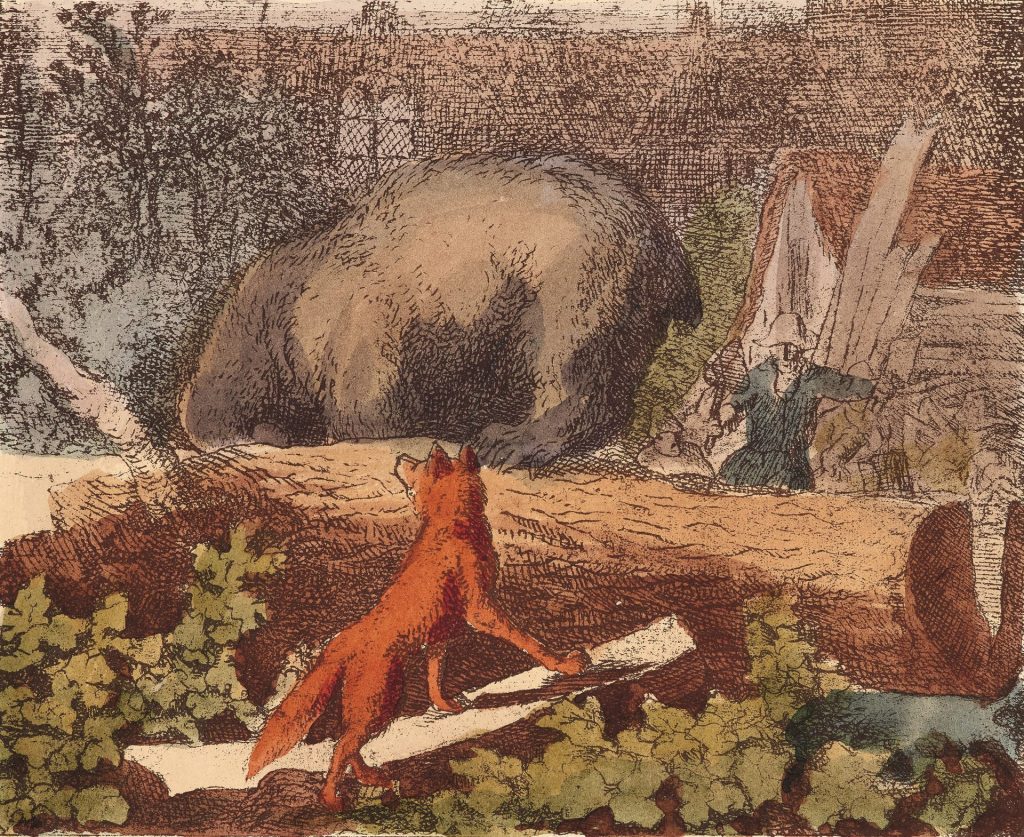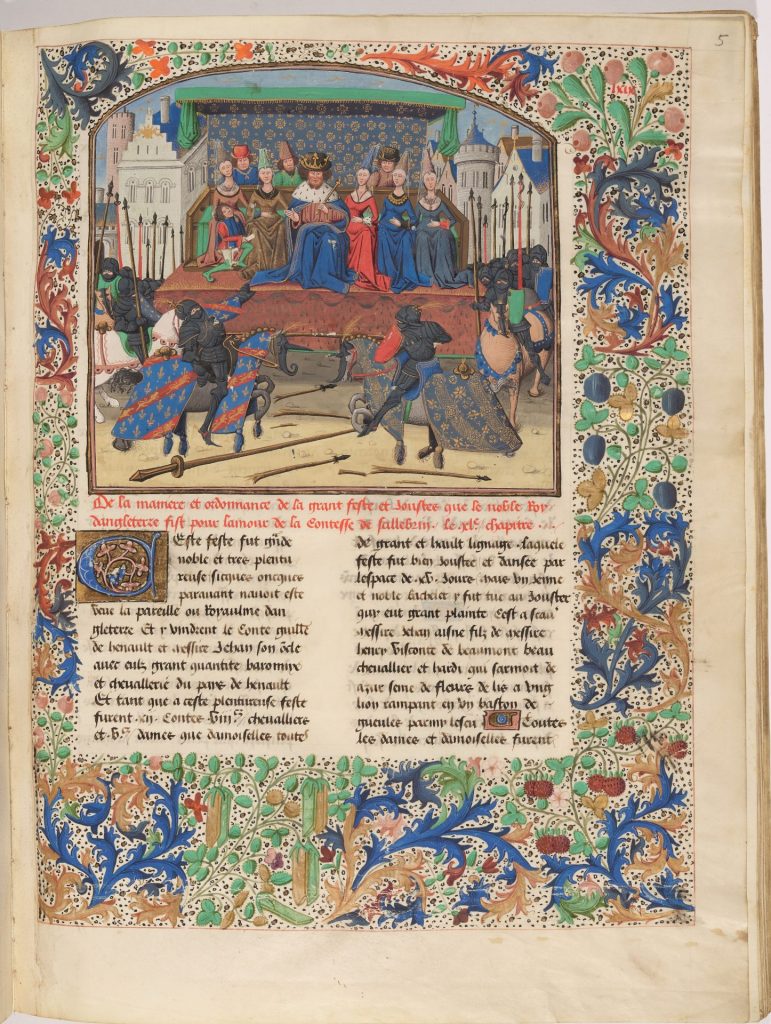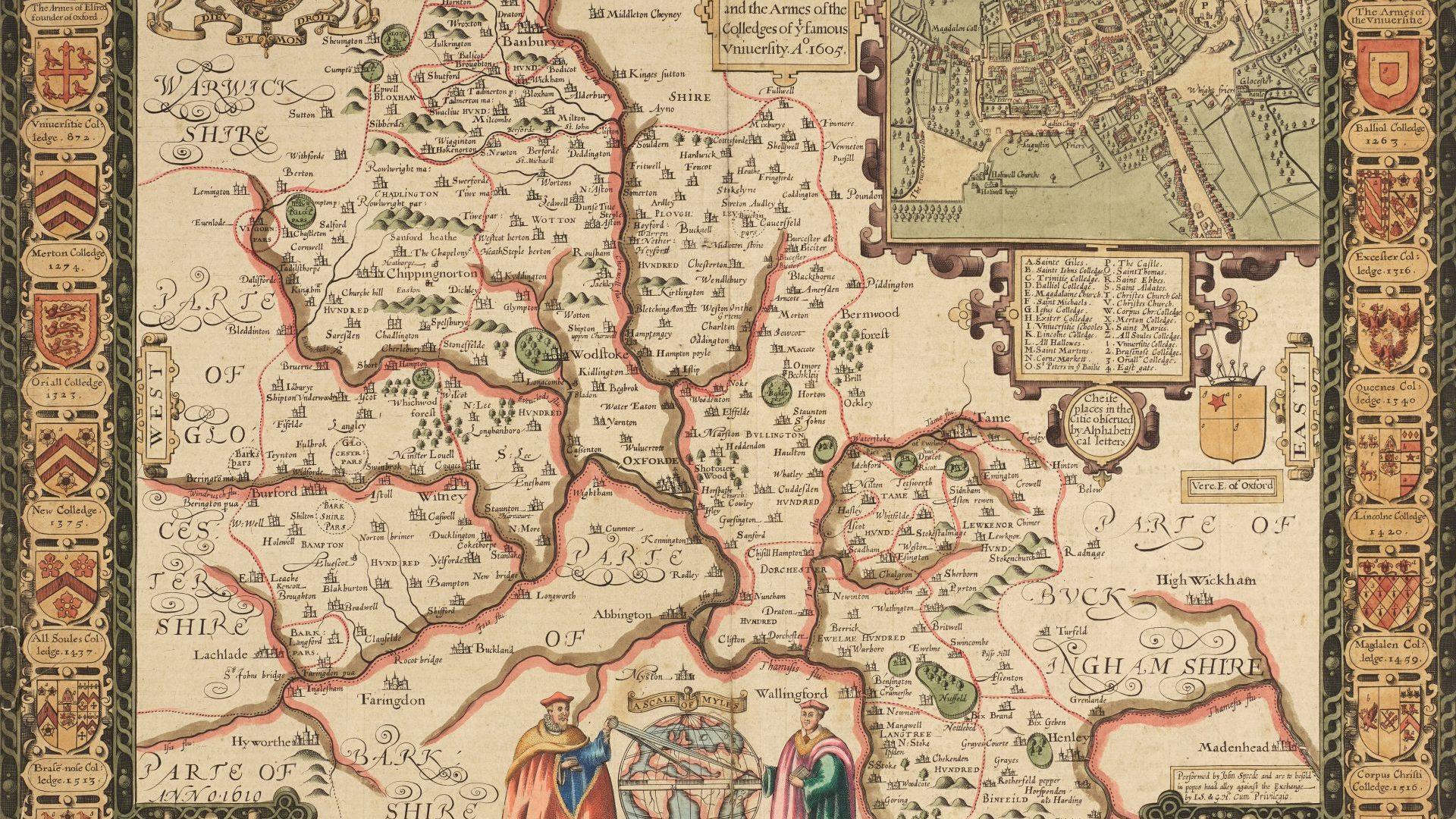The image of the medieval monk working away with his quill at a manuscript is recorded in hundreds of ancient images.
Hunched over his sloping desk in the monastery scriptorium – or writing room – painstakingly creating works of beauty about the lives of the saints or richly ornamented copies of the Bible. One such endeavour, a set of homilies written by a 10th-century abbot for preachers to use, takes pride of place in North Sea Crossings, an exhibition tracing 600 years of Anglo-Dutch history at the Bodleian Library, Oxford (until April 18).
Yet it is not the wisdom of the abbot that catches the eye, but two lines scribbled on the back of the faded parchment many years later. They read in Old Dutch: probatio pennae – test of the pen – and on the line below probatio incauxti. – test of the ink.
These apparently random asides by an unknown scribe from Rochester Cathedral, Kent, were, in fact, a check that the tools of his trade were in working order, that the quill, often cut and trimmed twice for each folio, was still clean and sharp.
The parchment represents “by far the earliest scrap of Netherlandish that has been recorded in England”, as an Oxford academic wrote in 1933, and is one of a remarkable collection of manuscripts, books, engravings and drawings brought together in this fascinating exhibition, which establishes how interconnected the countries were over the centuries from the Norman Conquest in 1066 to the Glorious Revolution of 1688.
Even these dramatic events have Anglo-Dutch connections: William the Conqueror sailed in with his Flemish wife, Matilda – she even financed his flagship, the Mora – and the Dutch prince William of Orange was offered the English throne in 1688 thanks to his English wife, Mary, daughter of the deposed James II.
They illustrate how the relationship between the countries was based on personalities – Elizabeth I was even asked to become ruler of the Netherlands – and characterised by war and rivalry, mutual respect and prejudice but, above all, as the exhibition demonstrates, defined by a cross-fertilisation of knowledge and culture.
Briefly, a definition for the area referred to as Dutch: For most of this period the Netherlands, Belgium, and the Pas de Calais, parts of Germany and Luxembourg were known as the Low Countries. Within what was a constantly shifting framework caused by war and conquest there were separate states such as Utrecht, Flanders, Friesland, Holland and Brabant.
To get an idea of this disparate territory, the first map representing the Netherlands as a political unit was the Leo Belgicus drawn in 1583, which pictured the country as a defiant lion, its tail flicking contemptuously across England’s eastern seaboard.

The manuscripts, with their blazing colours and meticulous draughtsmanship, are invariably dedicated to the glory of God or in deference to the monarch – and they steal the show. Here’s a portrait of Eadmer, Archbishop of Canterbury (1089–1109), busy writing at his desk in just the way the anonymous scribe copied his texts.
A page from a lavish psalter made in Ghent in about 1320 is embellished with a rabbit, a stag and one or two odd-looking creatures as well as a courting couple perched on a flowery bough. Another psalter owned by Mary Tudor is gloriously decorated with flowers that wreathe around an unsparing depiction of the murder of Archbishop Thomas Beckett. There are no holds barred – or lances left unbroken – in a stirring illustration of a tournament organised by Edward III.
There can be no better place to hold such an exhibition than the Bodleian, endowed as it was with hundreds of books by Thomas Bodley who also reinvigorated the establishment in 1602. As much as anyone he represents the political and intellectual network that connected both sides of the North Sea. He served in The Hague for Queen Elizabeth I as her representative on the Dutch Council of State from 1588-1597 and had many contacts among the scholars of nearby Leiden, living in the same street as the city’s chief librarian.
But although this was a world of the elites, the church and the aristocracy, what really developed the closeness of the two countries were the cultural exchanges that had begun as early as the 11th century, when many Flemish migrants brought their superior literacy skills to English monasteries. They travelled around the country gathering accounts of English saints from oral and written sources and sharing their knowledge with religious fraternities.
One was Goscelin of St Bertin, who wrote lives of the saints in Latin for numerous English abbeys, such as his life of the bishop and hermit St Ivo, which was reproduced in the 13th century in a work of precision and beauty, elegant in its simplicity, like all the manuscripts on display.
It is tempting to look for a thread leading from the early handwritten manuscripts through to the early days of printing and on to the sophisticated maps and illustrations that culminated with the time of the Glorious Revolution. Curators Sjoerd Levelt and Ad Putter, however, are clear that what connects them all is the North Sea as an area of cooperation in which the writers and printers dip into the shared network of communication and knowledge.
For example, William Caxton, England’s earliest printer, who printed his first English book in Bruges in 1473, spent 30 years in the Low Countries before returning to London in 1480 and setting up his press in Westminster.
His protegé Wynkyn de Worde, who was almost certainly Dutch, followed Caxton to London, and earned the nickname Father of Fleet Street by publishing popular romances, educational books for children and devotional literature.
Miles Coverdale, an English Protestant who had fled England in 1528 and found refuge in Antwerp, had Dutch financial backing for the printing of the first complete Bible in English in 1535. The cover is framed by scenes from the Old and New Testament while the English Royal Arms and Henry VIII’s portrait give the impression of royal approval.
As technology improved publishers were more readily able to reflect the dramas of the day. England and the Low Countries went to war three times in the 17th century, reaching a nadir, from the English point of view, in 1667 when the Dutch fleet swept up the Medway as far as the English dockyards.
The writer John Evelyn was an eyewitness and drew a map, which he sent to his fellow diarist, Samuel Pepys, exclaiming: “a Dreadfull Spectacle as ever any English men saw, and a dishonour never to be wiped off.”

The Great Fire of London in 1666 inspired eye-catching images of the capital engulfed in flames, which printers in Amsterdam were quick to publish given that the two countries were once again at war. They were eager too, to expose how a Flemish baker in Westminster had been accused of starting the fire and been badly beaten up for his pains.
But racial tensions were not new. In May 1593, a sheet of paper was fixed to the wall of a church in the St Paul’s area of London, threatening Dutch settlers with violence. The lengthy diatribe, known as the Dutch Church Libel, included the lines:
Your Machiavellian Marchant spoyles the state,
Your usery doth leave us all for deade
Your Artifex, & craftesman works our fate,
And like the Jewes, you eate us up as bread.
Many years before, Chaucer (c 1340-1400) had written about the victimisation of the Dutch in the Nun’s Priest’s Tale with the account of the Peasants’ Revolt of 1381 in which the rebels broke off to attack Dutch immigrants. “There never was such a noise as when the flemings were killed,” wrote Chaucer.
The Nun’s Priest’s Tale also stars a character known to both sides of the North Sea and one that represents much of the cultural interchange between the countries – Reynard the Fox. The very first mention of the fox comes in a mid-12th-century Latin poem written in Flanders called the Ysengrimus. It is an epic about a wolf called Ysengrim and his enemy, Reynard the Fox, in which the unknown author uses the animals to ridicule the Flemish nobility and clergy and, while he is at it, insult the English.
People enjoyed reading about the sheer chutzpah of the animal, which is splendidly portrayed in any number of comical poses. We see the fox doing a runner with a goose clamped between his jaws from a 15th-century allegory, in another from the 13th century the cunning fellow lies on his back so that birds think he is dead and try to pick at his remains; when they get close, the fox strikes. Hilariously, in the funeral procession of the fox – which was included in the border of a 14th-century life of Alexander the Great – while the bier is being carried by a wolf and a horse Reynard jumps out – not only that, he has grabbed a rooster to eat at his leisure.
Caxton published his History of Reynard the Fox in 1481 and immediately had a bestseller on his hands, not just because the people identified with the fox’s mockery of the establishment, but because the stories were told not in Latin, which only the intellectual aristocracy and church could read, but in vernacular Dutch and English, which they could readily understand.
Reynard’s appeal has never waned. In fact, there has scarcely been a time since the 11th century when he has not featured in popular culture. His story continues to this day with Roald Dahl’s Fantastic Mr Fox and the Walt Disney cartoon film of Robin Hood, which portrayed the legendary robber chief as a fox.
The spirit of good-natured bad behaviour that has appealed to so many generations still prevails. As Robin says to Little John in the film: “Rob? That’s A Naughty Word, We Never Rob! Just Sort Of… Borrow A Bit From Those Who Can Afford It.”
North Sea Crossings – The Weston Library, Bodleian Libraries, Oxford. Until April 18. Reynard the Fox, book by Anne Louise Avery
Richard Holledge is a journalist, editor and writer on the arts











